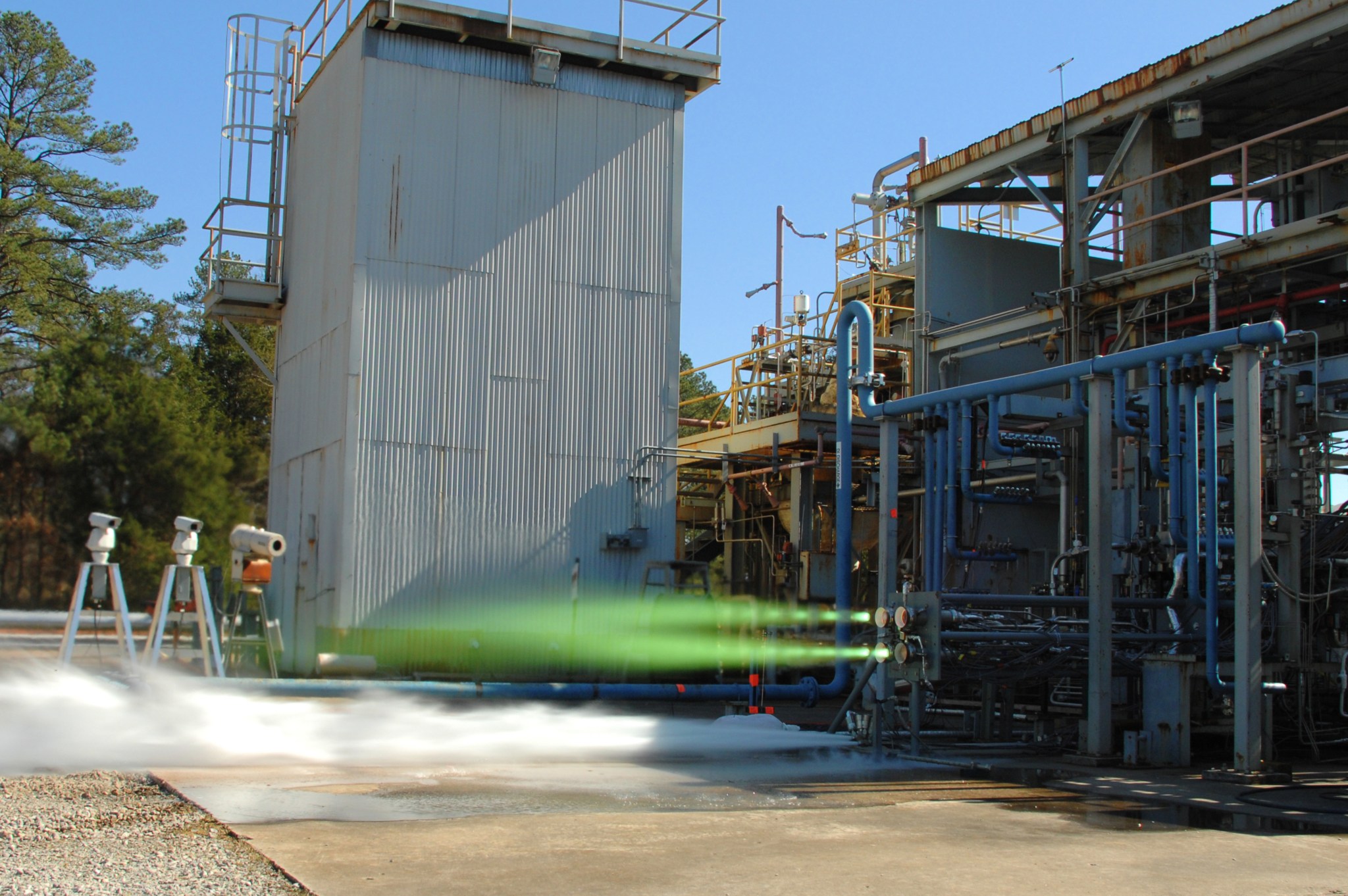Test conductors at NASA’s Marshall Space Flight Center in Huntsville, Ala., are making progress on the agency’s new rocket by listening closely to the roar of four thrusters.
The agency is developing the new rocket, called the Space Launch System, or SLS, at Marshall. This vehicle will enable space exploration beyond low-Earth orbit and take astronauts farther into space than ever before.
Marshall engineers recently assembled and ignited a sub-scale collection of thrusters to verify safe operation of an integrated system before creating a full model mockup of the SLS propulsion elements. The combined sub-scale elements, scheduled for testing in the fall of 2013, will help simulate the intense conditions of the SLS propulsion system, including the noise the engines and boosters make coming off the launch pad.
“If you’ve seen launches at the Kennedy Space Center in Florida, then you may have noticed the thousands of gallons of water poured onto the launch pad just before ignition,” said Janice Houston, a launch vehicle acoustics engineer with the Marshall Center’s Propulsion Systems Department. “All this water doesn’t just cool things off as the engines ignite. The primary purpose of the deluge is to help dampen the massive sound waves generated by the rocket.”
Test conductors at Marshall will listen for low- and high- frequency sound waves, as they can both potentially harm the rocket during ascent if not addressed. Low frequency pressure waves can physically impact the vehicle and affect the health of the crew. High frequencies could hurt the smaller, more complex components within the vehicle. Studying these sound waves help engineers redesign the suppression system for a safe launch.
This new round of scale model testing is verifying the operation of the liquid engine models before they are assembled into the full mockup model of the vehicle, liquid engines and solid rocket motors.
Microphones scattered around the test stand will collect acoustic data and provide valuable information to help redesign Kennedy’s sound suppression system at the launch pad to accommodate the SLS, which will be the largest and most powerful launch vehicle ever constructed.
Watch a video of the acoustic testing below:
Marshall’s test stands have provided successful test programs to evaluate new and unique designs for 50 years. NASA again tapped into this expertise to conduct this test, which was more than simply combining four thrusters and igniting them simultaneously.
“The entire assembly of hardware and propellant feed lines need to fit in a defined space represented as the rocket’s structure,” said Sandy Greene, an aerospace engineer in the Combustion Devices group of Marshall’s Propulsion Systems Department. “So plumbing the propellant lines, instrumentation and hardware into a tight space for a scale model test was a challenge. We had to verify all systems work as required to safely ignite and operate the four thrusters representing the SLS core stage engines.”
One of the key tenets of SLS is affordability. In order to help remain on budget, NASA will use RS-25 engines for the SLS core stage. These same engines were used as the space shuttle main engines to help power 135 shuttle flights. Like the engines, the hardware used as the test thrusters at Marshall is the same design used for acoustic testing for the shuttle in the 1960s.
Much like those same tests from the shuttle era, the initial nine tests of the thrusters over the course of February and March ran successfully. The roar of a scale model of all the SLS propulsion elements will echo across Marshall later this year.
In anticipation of the first test launch of SLS in 2017, NASA’s Kennedy Space Center’s Ground Systems Development and Operations Program has refurbished one of the firing rooms in the Launch Control Center. SLS will send an uncrewed Orion around the moon on its first launch, Exploration Mission-1.
By Bill Hubscher
NASA’s Marshall Space Flight Center

























